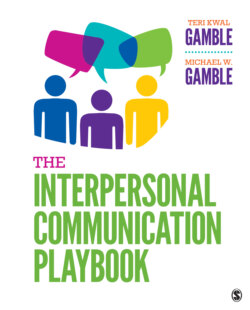Читать книгу The Interpersonal Communication Playbook - Teri Kwal Gamble - Страница 47
На сайте Литреса книга снята с продажи.
Axiom 5: Interactions Are Either Symmetrical or Complementary
ОглавлениеWatzlawick, Beavin, and Jackson categorize relationships as either symmetrical or complementary. In a symmetrical relationship, the parties mirror each other’s behavior. If one person is solicitous, the other is as well. If one person whines, the other does also. In contrast, in a complementary relationship, the parties engage in opposite behaviors. If one person is docile, the other is assertive. If one leads, the other follows.
Neither symmetrical nor complementary relationships are trouble-free. In a symmetrical relationship, the parties run the risk of experiencing “symmetrical escalation.” Believing they are “equal,” both people might assert, for example, the right to exert control. Once this starts, each may feel compelled to engage in battle to demonstrate his or her equality. And so, a status struggle begins. The main danger facing those in a symmetrical relationship is a runaway sense of competitiveness.
In contrast, those who share complementary relationships may face a problem called “rigid complementarity.” This problem surfaces when one party begins to feel that control is automatically his or hers. An overly protective mother who cannot accept that her child is grown, an employer unable to share leadership, and a teacher who cannot learn from others—all illustrate the rigidness that can develop in people who become locked into self-perpetuating, unchanging, unhealthy patterns of behavior. Switches in power are natural; we need to be prepared for them.
Taken together with the characteristics and principles of communication, the five axioms of communication provide additional knowledge as we seek to enhance our understanding and increase the effectiveness of our interpersonal contacts. Now let’s widen our focus.
